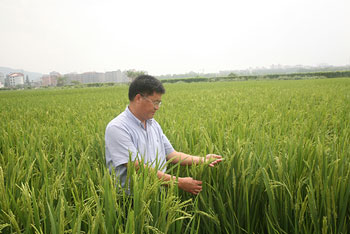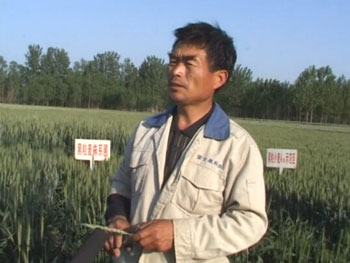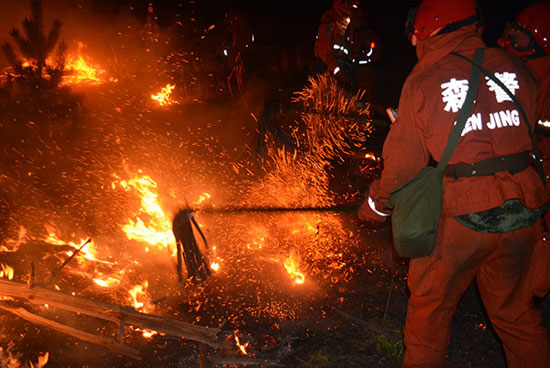It is not as difficult to grow rice as high yield as high quality.
Original title: Rice quality is more rare than high yield.

Research fellow Hu Peisong, an outstanding contribution to national grain production in 2014 (network photo: Chinese Academy of Agricultural Sciences)
Now, at the common people's dinner table, we have to admit that rice, the "former overlord", is gradually falling out of favor. Especially with the improvement of living standards, on the one hand, people's choice of staple food is becoming more and more diversified and personalized, on the other hand, the demand for rice eating quality is getting higher and higher.
In the past, in order to solve the problem of food security, high yield has always been the primary goal of rice breeding in China. Now, giving consideration to high yield and quality has become the new normal and new requirement of rice breeding. What is the situation of high-quality rice breeding in China? A few days ago, the reporter had an exclusive interview with Hu Peisong, deputy director of the China Rice Research Institute and head of the "Rice quality genetic improvement" team of the National Rice improvement Center.
"three ups and downs" of high-quality rice
In 2015, China's total rice output was 208.24 million tons, ranking steadily above 200 million tons for five consecutive years, but while the "domestic grain warehouse is full", China's rice imports will break through the new high of 3 million tons. From the data cited by Hu Peisong, it is not difficult to see that "the whole rice market transmits a strong signal: the quality of Chinese rice needs to be strengthened urgently, and the market needs high-quality rice."
But to some extent, there is a contradiction between high yield and high quality. Hu Peisong told reporters that although "high quality" has been placed at the core of rice breeding for many times, as long as the yield and area decline, "high yield" will immediately regain its dominance. In the past 30 years, high-quality rice has experienced "three ups and downs".
In 1985, the problem of rice quality attracted the attention of relevant departments. At that time, the Ministry of Agriculture held a forum on high-quality rice in Changsha, Hunan Province, and put forward the development direction of striving to promote the quality of products; the following year, rice breeding decided to take high quality as the primary goal; since then, the Ministry of Agriculture has also specially promulgated the industry standards of "high-quality edible rice" and "methods for determining rice quality."
However, soon after, domestic rice production was affected by this, and after the yield declined, the first peak ended hastily. Until 1992, the State Council proposed to take the agricultural development road of "high yield, high quality and high efficiency", and high-quality rice finally ushered in the second spring. But the following year, the area and production of domestic rice fell sharply, making the spring even shorter.
From 1994 to 1997, when high yield was emphasized, rice yield gradually rebounded, and with the strategic structural adjustment of agriculture implemented in 1998, high-quality rice ushered in the third peak. As a result, when tackling key problems in breeding, we have gradually taken into account both high quality and high yield. " Hu Peisong said.
At present, with the basic quality of japonica rice in the north and the location of the rice in Zhejiang, Hu Peisong's team naturally focused on the breeding of indica rice varieties in the south. Relatively speaking, southern indica rice generally has some shortcomings, such as high chalkiness rate, low head rice rate, hard rice, poor taste and so on. The standard rate of high quality rice is only about 30%, and there is a lot of room for improvement.
Rice quality research is the foundation
How to judge the quality of rice? Hu Peisong said bluntly that the concept of high-quality rice was very complicated, and he briefly introduced several core indicators to reporters: milling quality, appearance quality, eating quality, and nutritional quality. In popular terms, it is easy to process, good-looking, delicious and nutritious.
"the shape can be observed by grain length, grain width, chalkiness and transparency. Generally speaking, the less chalkiness is, the easier the rice is to be processed and the better its commercial quality is. But when it comes to eating and nutritional quality, it must be analyzed by physical and chemical indicators, including starch, protein, water content, gelatinization temperature, gel consistency, etc. " Hu Peisong introduced.
In 1991, Hu Peisong began to study the genetic improvement of rice quality. He admitted that the study of quality is more difficult than that of high yield. Take starch, which accounts for about 75% of rice, as an example, its synthesis is currently known to be controlled by more than 30 genes, and most of them are quantitative genes, that is, traits are extremely vulnerable to the environment.
Breeding is guided by market demand
The reporter learned that at present, the production of high-quality rice is mainly indica rice in South China, indica and japonica rice in central China, indica, japonica and glutinous rice in the southwest plateau, and japonica rice in the north. Relatively speaking, due to the poor edible quality of southern early indica rice, the research and development of high quality rice still has a long way to go.
What is the direction of China's high-quality rice research and development in the future? "under the pressure of the market, with the change of the mode of production and management of rice, especially the main body of scale has higher and higher requirements for rice quality, but food security still needs to be firmly grasped, so in breeding, high quality and high yield should be taken into account at the same time." Hu Peisong pointed out that high quality can also be reflected in uses and characteristics.
"like some early indica rice varieties, they are actually very suitable for processing into rice noodles, as well as the expansion of functional rice, and the future market prospect is also very optimistic." Hu Peisong said that in the future, for special groups such as kidney disease, diabetes, cardiovascular disease and other special groups, it is expected to emerge new rice varieties that are highly personalized and have health care and auxiliary therapeutic functions.
In terms of rice safety, the current farmland irrigation area is seriously polluted by heavy metals, in which cadmium is the most important pollutant. How to highlight the characteristics of low cadmium accumulation in rice grains has become one of the important directions of breeding. Fortunately, most of the varieties selected by Hu Peisong's team are varieties with low cadmium accumulation, and "Zhongjiazao 17" has also been recommended as an acute variety with low cadmium accumulation in Hunan Province. (our reporter Zhu Haiyang)
- Prev

How to adjust the planting structure? talk to you about summer sowing.
How to adjust the planting structure? talk to you about summer sowing.
- Next

The fire in the mother tree forest area of Pinus sylvestris var. mongolica in Inner Mongolia was put out successfully.
The fire in the mother tree forest area of Pinus sylvestris var. mongolica in Inner Mongolia was put out successfully.
Related
- A course of planting techniques and methods on how to grow carrots
- How to plant the latest tulips?
- Is it better to pick tea in the morning or in the afternoon? When is the best time for tea to be picked? what is the third or fifth tea?
- Launch Yuanxiao Happy combination Haocha + Tea Yuan healthy Taste
- Penghu Tourism "Fireworks 20 Parade with You"
- 2022 West Lake Happiness holds "Digital Revitalization Voucher" and draws iphone13 and laptop.
- Banqiao Fuzhou social houses are designed to change start-up combined with police elimination to create a safe and livable environment
- The convenient measure of "mechanical weeding" in Xinbei has been abused and the Agriculture Bureau has imposed heavy penalties on the illegal land consolidation.
- Changgeng University Joins Hands with Four Memory Factories to Rescue Memory Talent Shortage
- The list of Taiwan's top 100 MVP managers is listed by the Director-General of the Farmers' Association of Sanxia District.

